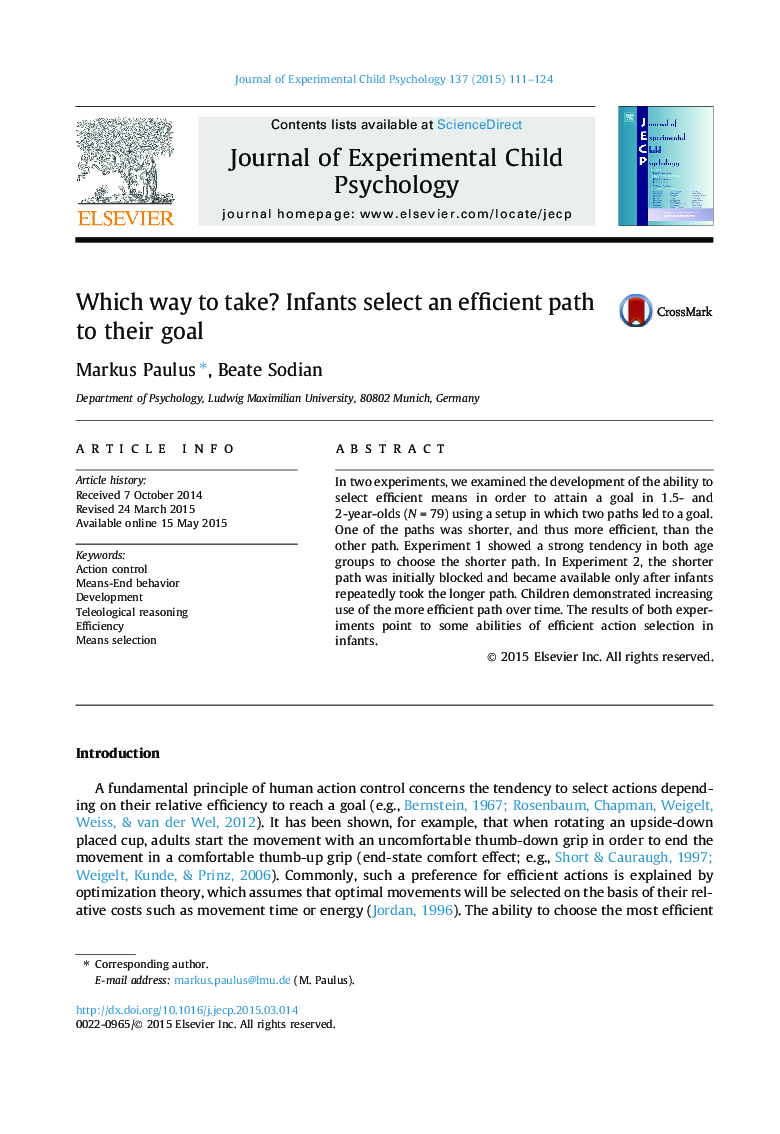| Article ID | Journal | Published Year | Pages | File Type |
|---|---|---|---|---|
| 7275049 | Journal of Experimental Child Psychology | 2015 | 14 Pages |
Abstract
In two experiments, we examined the development of the ability to select efficient means in order to attain a goal in 1.5- and 2-year-olds (NÂ =Â 79) using a setup in which two paths led to a goal. One of the paths was shorter, and thus more efficient, than the other path. Experiment 1 showed a strong tendency in both age groups to choose the shorter path. In Experiment 2, the shorter path was initially blocked and became available only after infants repeatedly took the longer path. Children demonstrated increasing use of the more efficient path over time. The results of both experiments point to some abilities of efficient action selection in infants.
Keywords
Related Topics
Social Sciences and Humanities
Psychology
Developmental and Educational Psychology
Authors
Markus Paulus, Beate Sodian,
